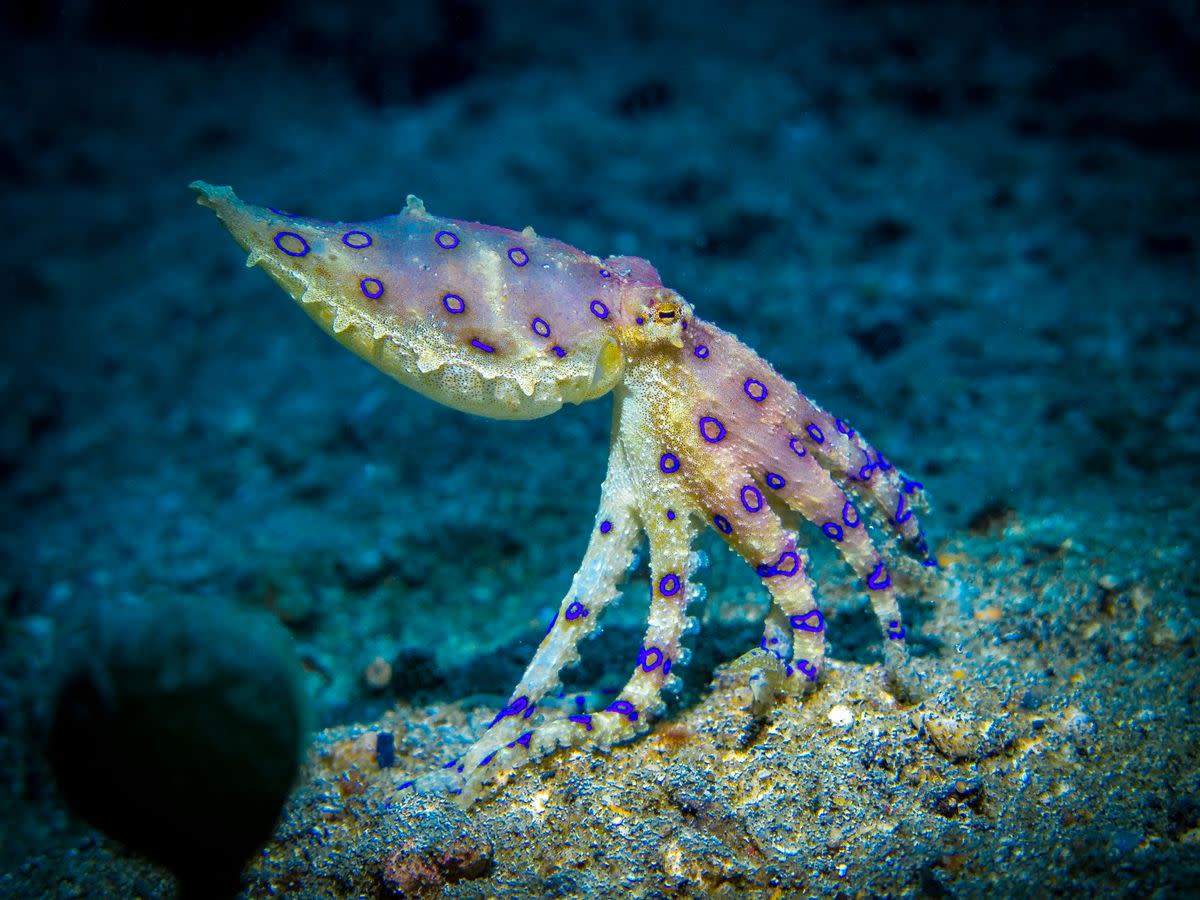Blue-Ringed Octopus Has Enough Venom to Kill 26 Adult Humans Within Minutes?

Claim:
Blue ring octopuses can inject enough venom with a painless bite to kill 26 adult humans within minutes.
Rating:
In June 2024 and for years, rumors have spread that a very small, beautiful octopus covered in blue rings has enough venom to kill 26 adults within minutes:
The blue-ringed octopus, despite its small size, carries enough venom to kill 26 adult humans within minutes.
Their bites are tiny and painless, with many victims not realizing they have been envenomated until paralysis begins.pic.twitter.com/Wj2udj41lc— Massimo (@Rainmaker1973) June 5, 2024
This X post had garnered 55,700 views, 126 reshares and 488 likes as of this writing. Several other posts repeated the claim, including on Reddit and Facebook.
As we'll see, the claim is true.
While blue-ringed octopuses never attack humans, they can bite when they feel threatened, for example if someone steps on them or picks one up. According to the Natural History Museum in London, U.K., they carry the same powerful neurotoxin as pufferfish, newts or salamanders. It's called tetrodotoxin (TTX), and it is about 1200 more toxic than cyanide. The Aquarium of the Pacific in Long Beach, California, confirmed that the dose delivered in a blue-ringed octopus bite may be sufficient to kill 26 adults.
The neurotoxin causes progressive paralysis. Victims usually die of asphyxiation, as their diaphragm ceases to contract and relax. The Centers for Disease Control and Prevention (CDC) listed the symptoms that can result from the ingestion of TTX:
There is indeed no antivenom for TTX as of this writing, according to the same CDC fact-sheet on the toxin. However, it is not impossible to survive a bite with appropriate, immediate treatment. For example, in 2006, a four-year-old boy in Australia survived two blue-ringed octopus bites because his mother identified the threat and sought care within 20 minutes of the bite. The hospital staff intubated and ventilated the child, who was able to move his muscles spontaneously 15 hours later.
Researchers believe there are about 10 species of blue-ringed octopus in existence, though they've only named four of them. They typically live in southern seas, around Australia, the Philippines, India, Papua New Guinea or the Solomon islands. Specimens of the four species listed can range in size from 12 to 22 centimeters (4.7 to 8.7 inches) including tentacles.
They are beautiful, but it is best to steer clear of them. If you find yourself in the shallows of Queensland or Vanuatu, take care to avoid them, and never do what this woman did, which is to pick one up:
Sources:
Cavazzoni, Elena, et al. 'Blue-Ringed Octopus ( Hapalochlaena Sp .) Envenomation of a 4-Year-Old Boy: A Case Report'. Clinical Toxicology, vol. 46, no. 8, Jan. 2008, pp. 760–61. DOI.org (Crossref), https://doi.org/10.1080/15563650701601790.
Lago, Jorge, et al. 'Tetrodotoxin, an Extremely Potent Marine Neurotoxin: Distribution, Toxicity, Origin and Therapeutical Uses'. Marine Drugs, vol. 13, no. 10, Oct. 2015, pp. 6384–406. PubMed Central, https://doi.org/10.3390/md13106384.
Pacific, Aquarium of the. Greater Blue-Ringed Octopus. https://www.aquariumofpacific.org/onlinelearningcenter/species/greater_blue_ringed_octopus1. Accessed 6 June 2024.
'Southern Blue-Ringed Octopus'. Oceana, https://oceana.org/marine-life/southern-blue-ringed-octopus/. Accessed 6 June 2024.
Tetrodotoxin: Biotoxin | NIOSH | CDC. 25 May 2023, https://www.cdc.gov/niosh/ershdb/emergencyresponsecard_29750019.html.
'The Blue-Ringed Octopus: Small but Deadly'. Ocean Conservancy, 13 Mar. 2017, https://oceanconservancy.org/blog/2017/03/13/the-blue-ringed-octopus-small-but-deadly/.
The Blue-Ringed Octopus: Small, Vibrant and Deadly. https://www.nhm.ac.uk/discover/blue-ringed-octopus-small-vibrant-deadly.html. Accessed 6 June 2024.

 Yahoo News
Yahoo News 

